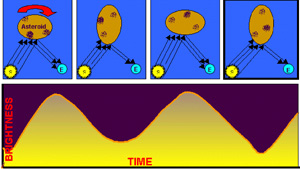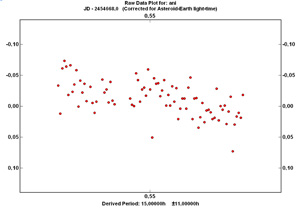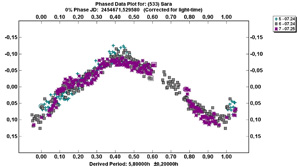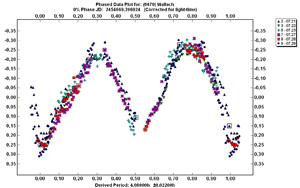
Jasmina Sestan[1], Niko Simic[2], Ivica Pletikosa[3], Filip Novoselnik[4], Stefan Cikota[5], Dijana Vrbanec[6]
- [1] Pazinski kolegij - klasicna gimnazija, Pazin, Croatia
- [2] Gimnazija Vladimira Nazora, Zadar, Croatia
- [3] Gimnazija Antuna Vrancica, Sibenik, Croatia
- [4] Opca gimnazija, Osijek, Croatia
- [5] Faculty of Science, Department of Physics, Zurich, Switzerland
- [6] Faculty of Science, Department of Physics, Zagreb, Croatia
The Solar system doesn’t only consist of the Sun and planets but it also consists out of asteroids and other celestial bodies. Asteroids are celestial bodies that are orbiting around the Sun. They are irregularly shaped and divided into about 35 groups like MBA, Trojans, NEO, Hildas.... The Main asteroid belt is placed between Mars and Jupiter.
Our equipment is located in Observatorio de Mallorca in one of the domes. We used a 0.30-m f/9 LX200 (Schmidt-Cassegrain) telescopes called Remos and a CCD camera SBIG STL-1001E. For planning our observations we used astro software Easy sky and for processing data we used MPO Canopus (for making light curves of asteroids) and Astrometrica (for blinking, stacking images and locating asteroids).
Additionally to determination of light curves of asteroids, we will watch out for new variable stars and try to confirm some recently discovered NEO. Applicants to this group should have an interest in CCD astrophotography, asteroids and comets...
Photometry means measuring the sunlight reflected from the asteroid. With it we can find out the shape of an asteroid, period of rotation, constitution, etc. Light curves show us how brightness of an asteroid changes in time, which is caused by the shape of an asteroid (Image 1). The light curve has maximums and minimums. If sunlight is reflected from larger side of an asteroid, we can see maximum on light curve and if sunlight is reflected from smaller side of asteroid, we have minimum. By combining minimums and maximums into a curve we can get the shape of an asteroid.
We processed asteroid (791) Ani. On its light curve (Image 2) we can see that dots are ordered in straight line. That means that asteroid is either spherical or it has very long period of rotation.
In light curve of asteroid (533) Sara we can see only half of its period of rotation (Image 3). It is complicated to get the whole light curve because its period is about 12 hours and that means that every night from our observatory we could see the same part of asteroid. To get the whole light curve, it would be needed to observe from distant different places.
In Image 4 we can see light curve of asteroid (6670) Wallach which we observed for six nights. Rotational period is 4,08 ± 0,022 h. It has two maximums and two minimums. We can see that the first maximum and minimums are sharp. This indicates that the asteroid could be binary.
Follow-up is confirmation of already found object. It is important for getting orbit of the asteroid. We did follow-up of two NEOs from NEO Confirmation page. One discovered from La Sagra and the other from Siding Spring. We also did follow-up of 15 main belt asteroids discovered from La Sagra. Our measurements of two NEOs are published in Minor Planet Electronic Circular.
We have also imaged comet C/2007 W1 Boattini. We made false color image on which we can see different densities of comet, and we also made image with Larson Sekanina filter that shows jets.
We learned how to plan observations, how to observe asteroids and comets, about CCD camers and imaging techniques and how to do astrometry and photometry of asteroids. We also learned that asteroids have different shapes and periods of rotation. We realized that there are many undiscovered objects so there is still much to do.





